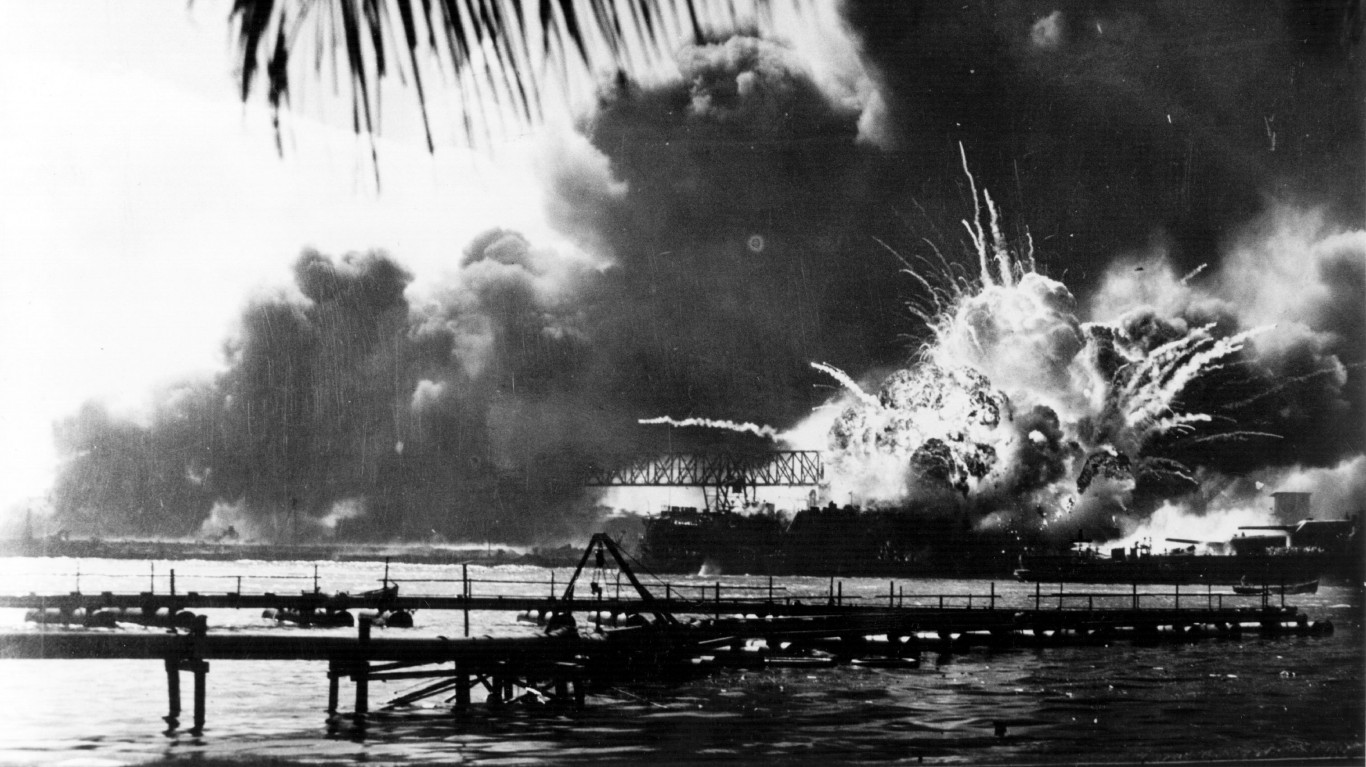
The Age of Sail was a period from the late 16th century to the mid 19th century where ships were used for trade, travel – and fighting in wars. Though it took some time to build the U.S. Navy, eventually it became a dominant force. The U.S. Navy’s first warship was the USS Constitution, launched on October 21, 1797. (This is the world’s largest warship.)
A small number of sea battles between the great European nations wrote military history at the start of the 19th century. First among these was the Battle of Trafalgar on Oct. 21, 1805, which pitted the British Navy led by Vice-Admiral Horatio Nelson, 1st Viscount Nelson, 1st Duke of Bronte against a force of combined French and Spanish fleets. Nelson died in the battle, but it ended Napoleon’s chances of invading England.
During the Revolutionary War, the British Navy effectively blocked most sea traffic to what would become the United States. Despite help from the French, the colonies had no navy to speak of with which to challenge the British.
The U.S. did not have one until Oct. 21, 1797, when the USS Constitution was launched. The Constitution’s first actions were against several frigates during the War of 1812. The ship was hit by several canon balls, none of which penetrated its oak hull. It was given the name “Old Ironsides.” (These are the worst disasters in naval history.)
In addition to the USS Constitution, a number of U.S. Navy ships have become famous because of their participation in sea engagements over the years.
This is the US Navy’s first war ship
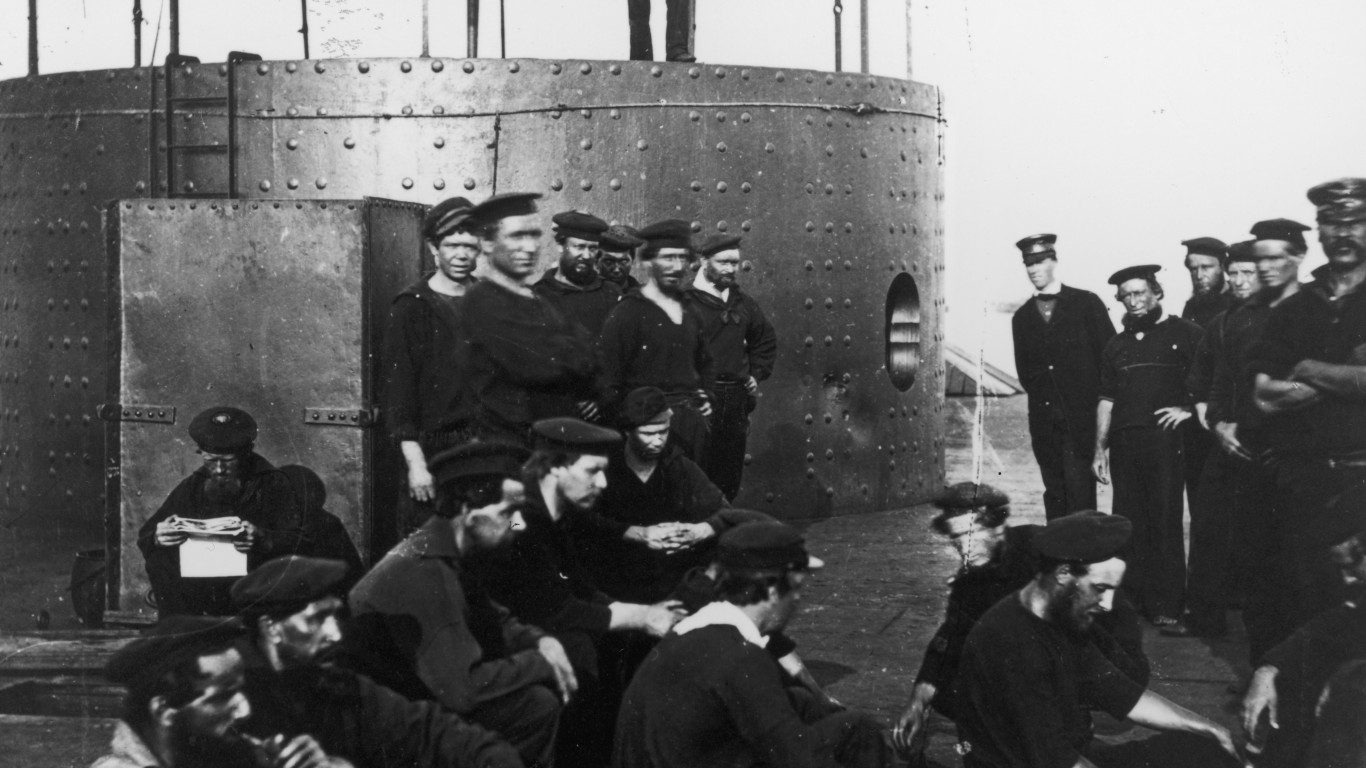
1. USS Monitor
The battle of the ironclads may be the most famous naval engagement of the Civil War. The USS Monitor squared off against the Confederate CSS Virginia on March 9, 1862. After a three hour battle at Hampton Roads, the ships disengaged, each relatively undamaged. The U.S. would build ironclads for several more years.
[in-text-ad]

2. USS Maine
The cruiser was stationed in Havana harbor on the night of February 15, 1898, when it exploded without warning, and 245 sailors were killed. It was rumored that the ship was attacked by the Spanish. The event helped precipitate the start of the Spanish-American War.
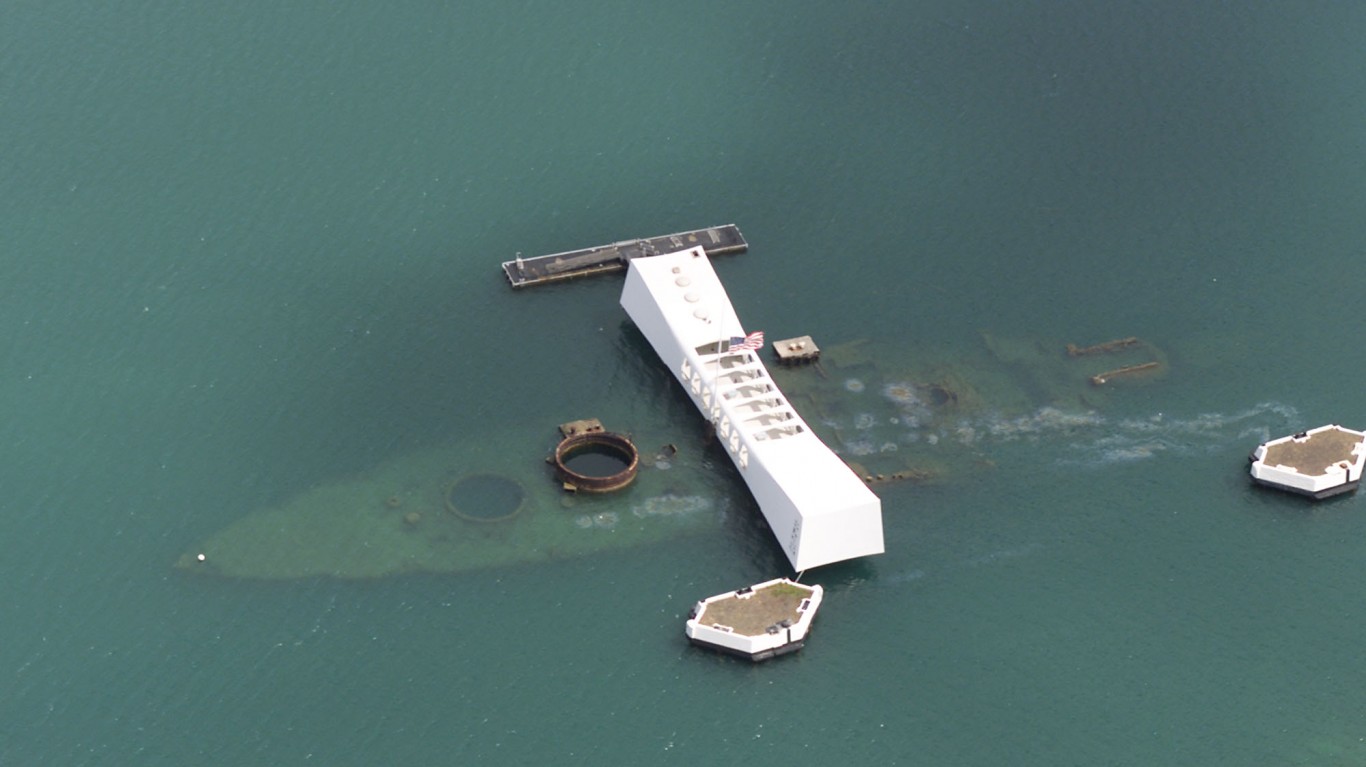
3. USS Arizona
The Arizona went down with over 1,100 sailors on board when the Japanese attacked Pearl Harbor. It is now the most prominent memorial to the battle. Arizona was one of several huge Pennsylvania class battleships and was part of the Navy’s efforts to become the world’s dominant sea power, a place England held for years. Pearl Harbor ended that.

4. USS Yorktown
The Battle of Midway (June 4-7, 1942) turned the tide in the Pacific after the disaster at Pearl Harbor. The U.S. entered the battle with three aircraft carriers to the four in the Japanese fleet. All four of the Japanese carriers were sunk or badly damaged. USS Yorktown was damaged earlier, at the Battle of Coral Sea on May 8, 1942. At the time, experts believed it would take 90 days to repair the ship, but Yorktown was able to be at Midway, having been put to sea only three days after repairs started at Pearl Harbor.
[in-text-ad-2]
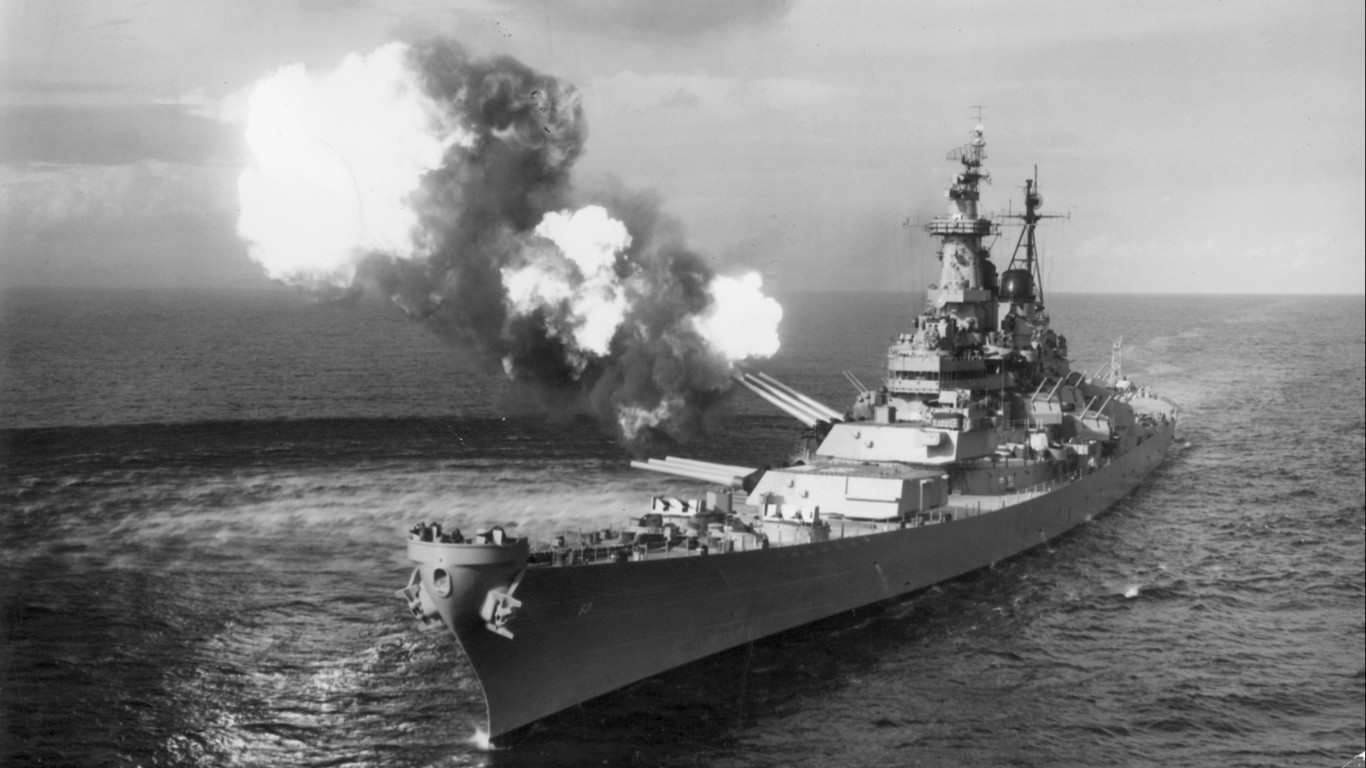
5. USS Missouri
The USS Missouri was one of the first new battleships put into service after the disaster at Pearl Harbor. It was involved in several engagements in World War II, including the attack on Okinawa before the landing of U.S. troops. On Sept. 2, 1945, the Japanese signed their formal surrender on the Missouri’s deck. The ship would continue in service during the Korean War, Vietnam, and the Persian Gulf War.
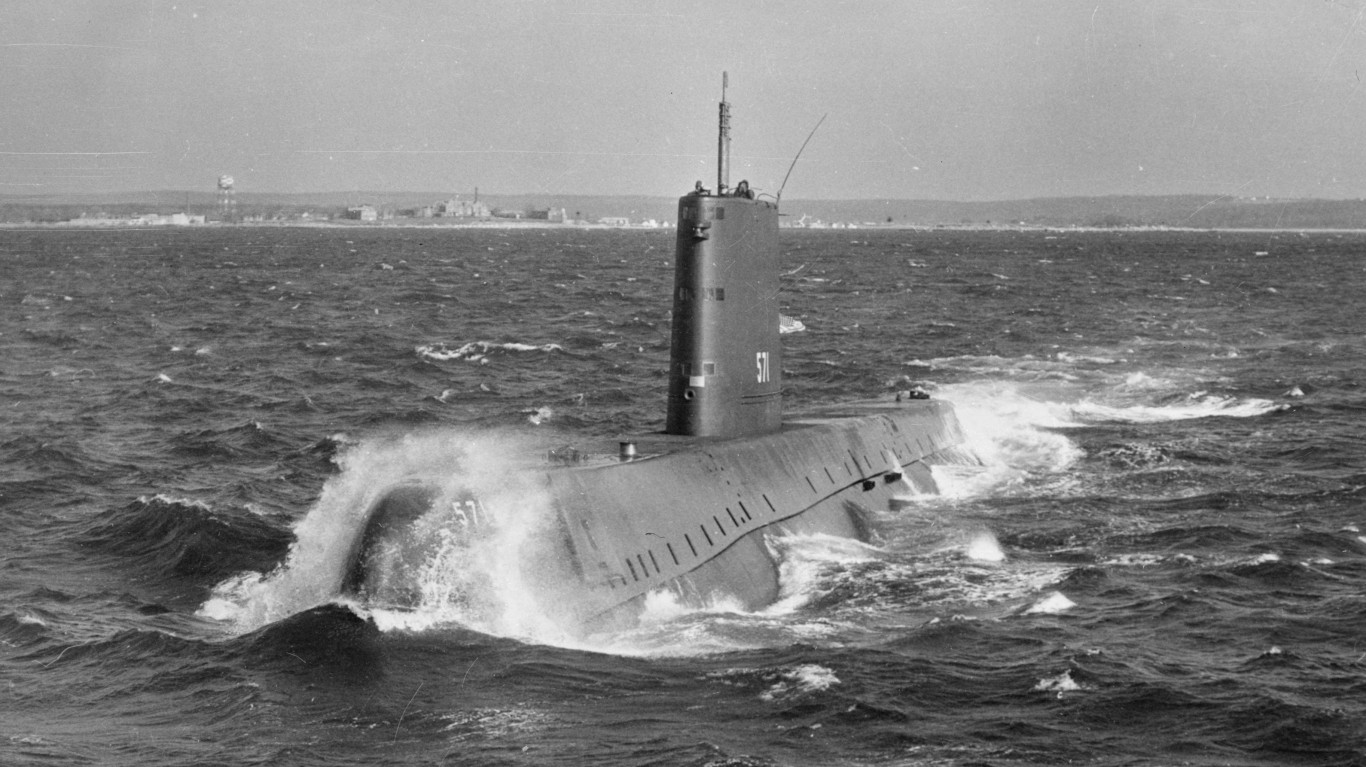
6. USS Nautilus
The first nuclear-powered submarine allowed the U.S. navy to enter the age where traditional fuels were no longer needed to power ships. Similar engines were used in aircraft carriers. Launched in 1954, it was the first submarine to travel under the ice of the Arctic Circle.
[in-text-ad]
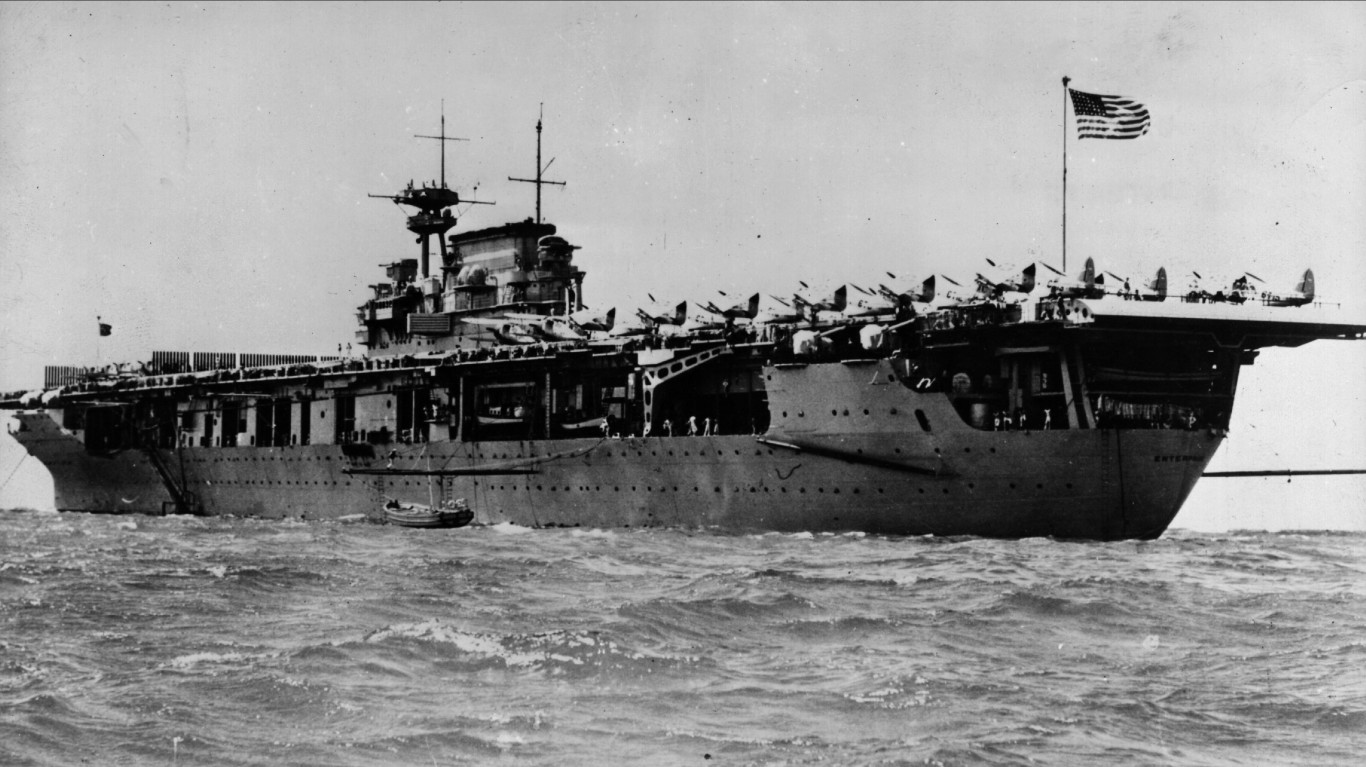
7. USS Enterprise
The first nuclear carrier in history, Enterprise was commissioned on Nov. 25, 1951, just a decade after Nautilus. It was deactivated in 2021. Enterprise proved that an extremely large ship could be powered by a nuclear engine that allowed it to remain at sea for a long period. These new carriers only need to be refueled every 20 years.
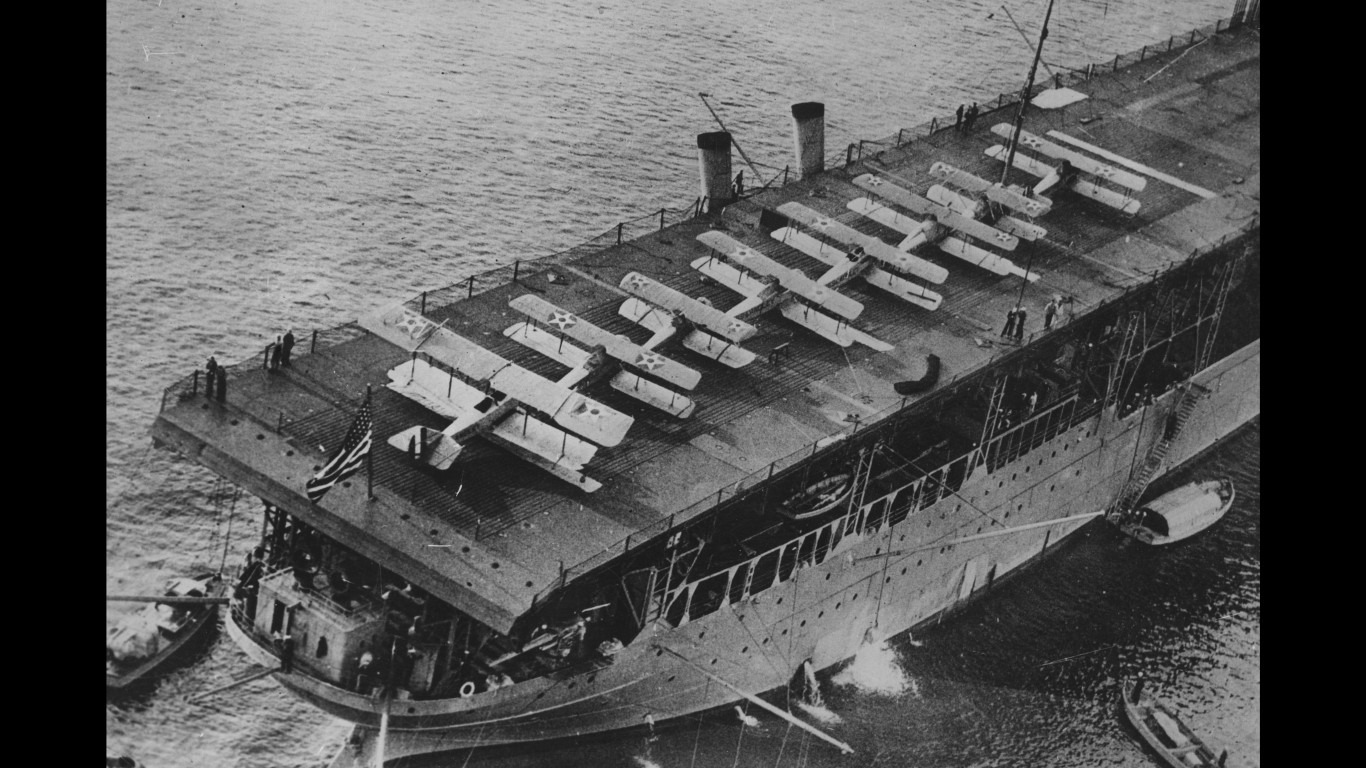
8. USS Langley
The Navy’s first aircraft carrier went into service in 1922. The first U.S. aircraft carrier was not even built as a carrier. The USS Langley had previously been the USS Jupiter, which was commissioned in April 1913. The Jupiter was a refueling ship that had also transported personnel and cargo. With its large cargo holds, it was one of the few Navy ships with enough space to accommodate aircraft.
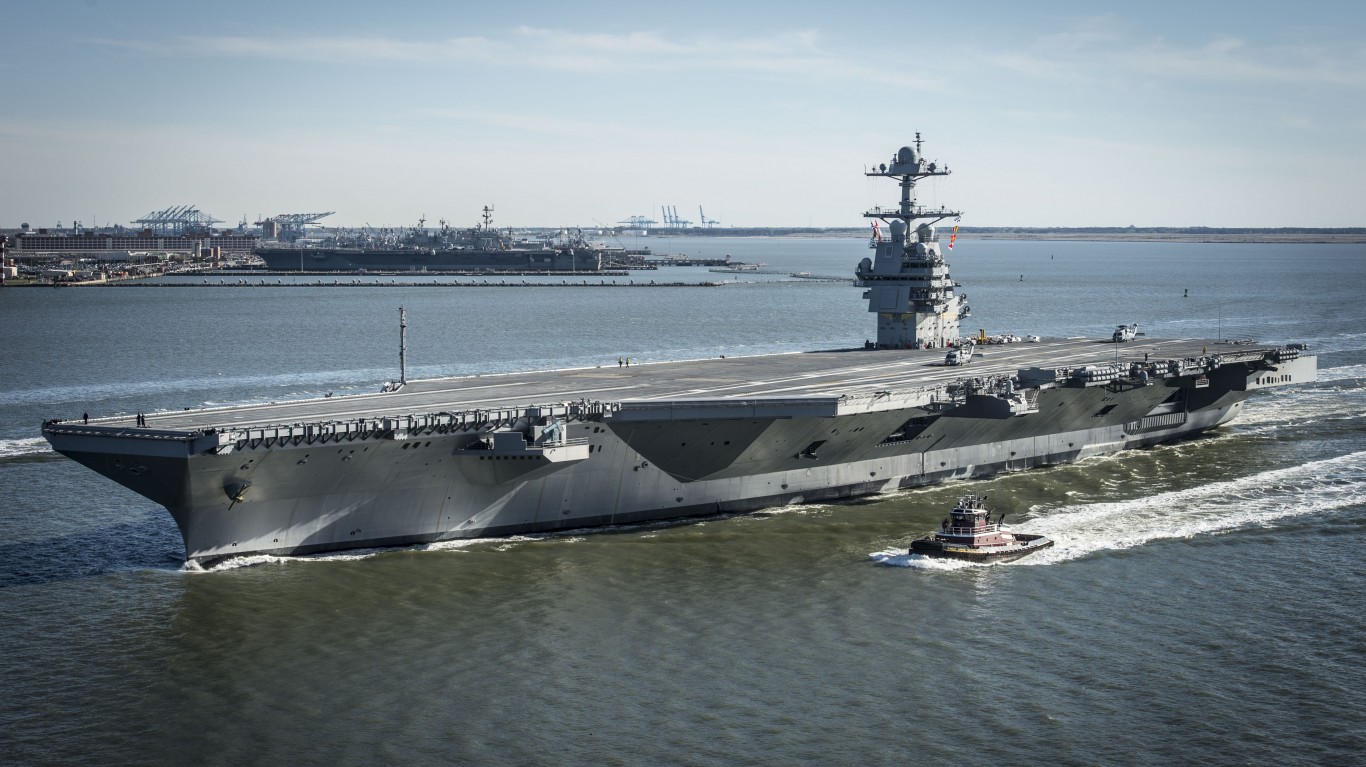
9. USS Gerald R. Ford
The first of the new Gerald Ford Class carriers, which are considered the cornerstone of the U.S. Navy’s future, its launch has been a disaster. The carrier cost taxpayers $15 billion. According to CNN, four major systems on Gerald R. Ford failed early tests.
100 Million Americans Are Missing This Crucial Retirement Tool
The thought of burdening your family with a financial disaster is most Americans’ nightmare. However, recent studies show that over 100 million Americans still don’t have proper life insurance in the event they pass away.
Life insurance can bring peace of mind – ensuring your loved ones are safeguarded against unforeseen expenses and debts. With premiums often lower than expected and a variety of plans tailored to different life stages and health conditions, securing a policy is more accessible than ever.
A quick, no-obligation quote can provide valuable insight into what’s available and what might best suit your family’s needs. Life insurance is a simple step you can take today to help secure peace of mind for your loved ones tomorrow.
Click here to learn how to get a quote in just a few minutes.
Thank you for reading! Have some feedback for us?
Contact the 24/7 Wall St. editorial team.
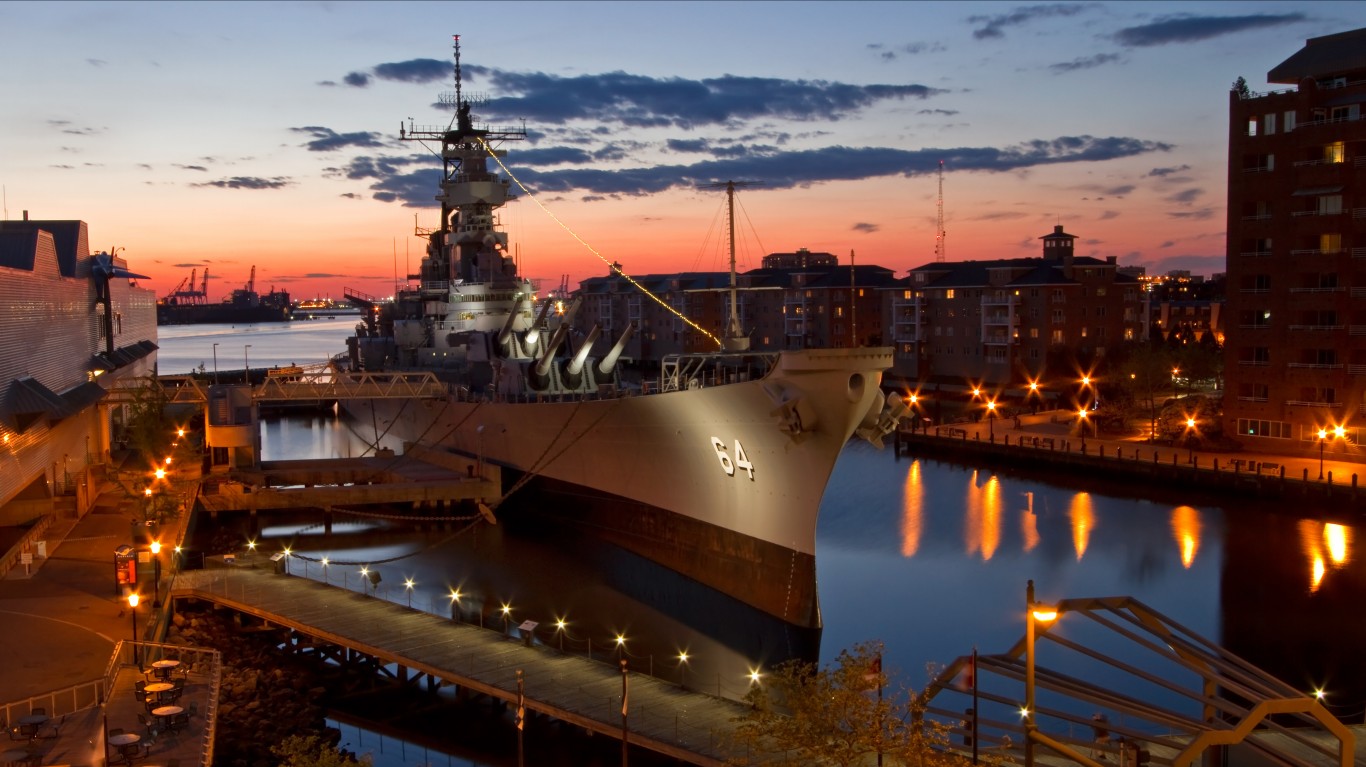 24/7 Wall St.
24/7 Wall St.